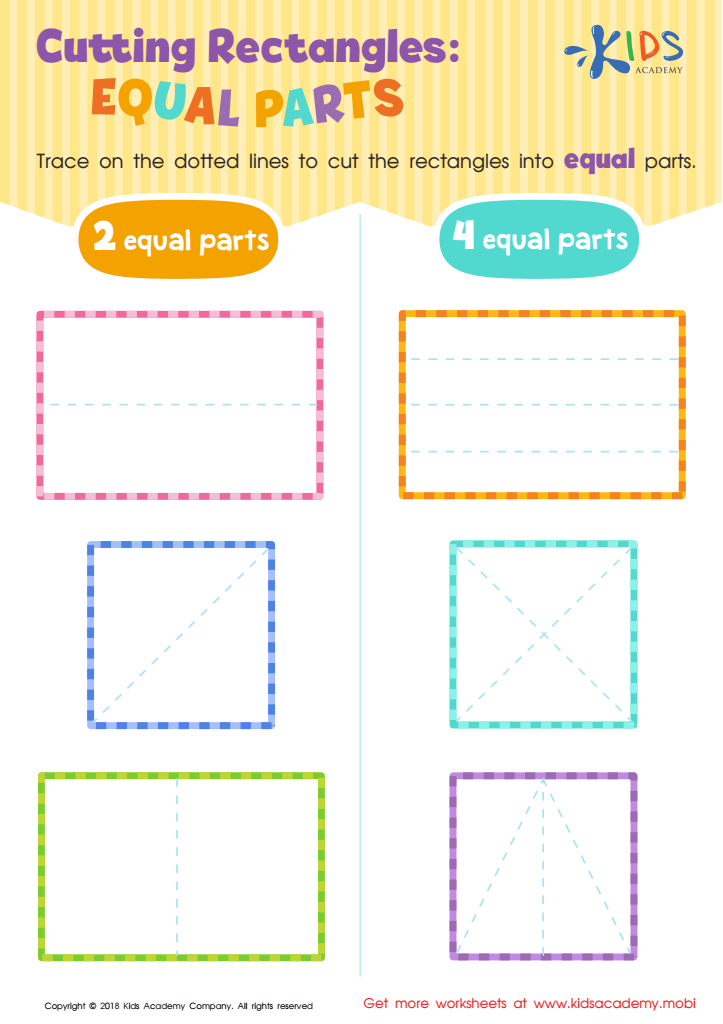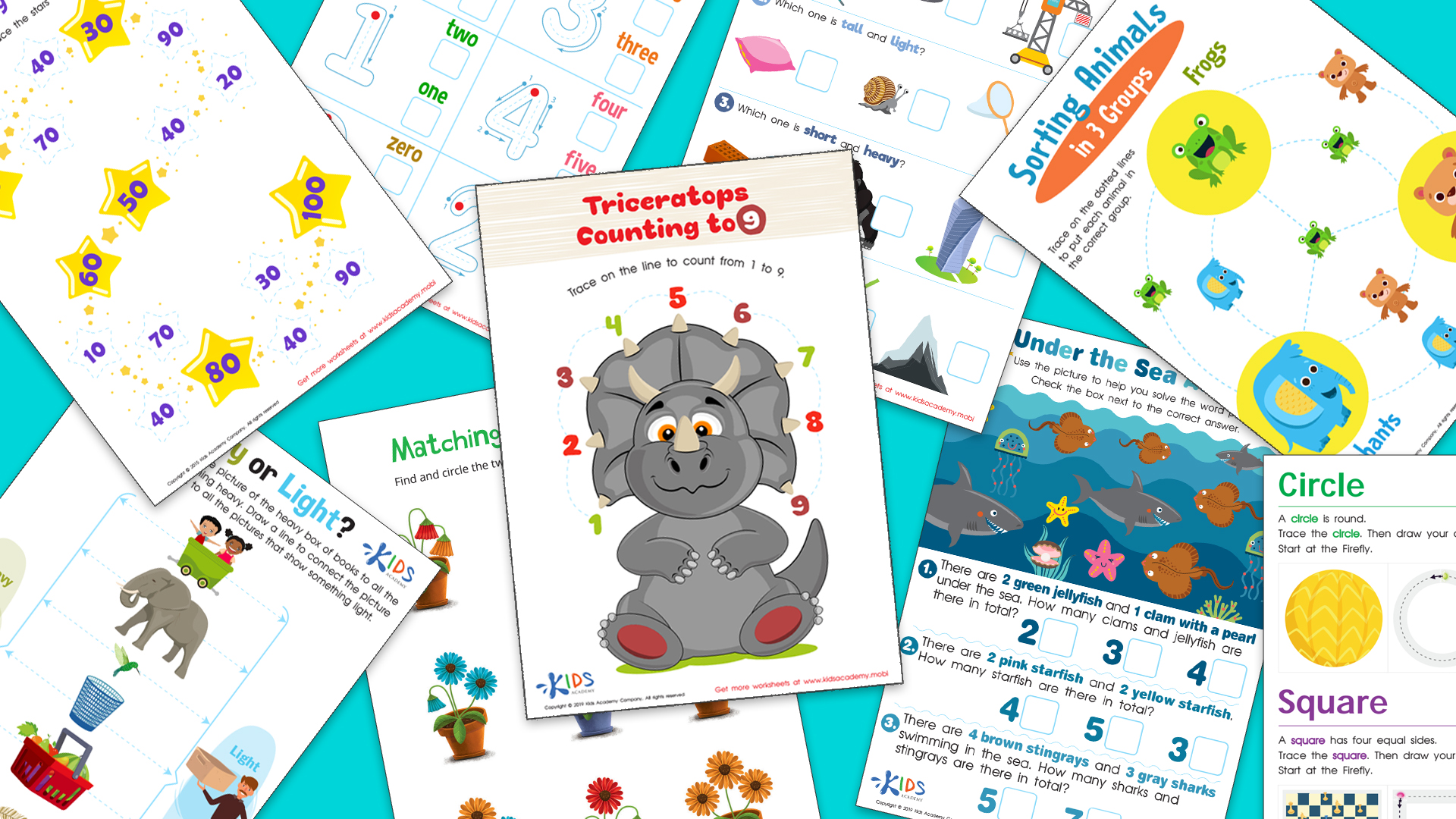Developing spatial recognition Worksheets for Kids
1 filtered results
-
From - To


Cutting Rectangles: Equal Parts Worksheet
Question/Answer
What does the Developing spatial recognition skill mean when it comes to Grade 1 Geometry learning?
Developing spatial recognition skill in Grade 1 Geometry involves helping students understand and manipulate shapes within their environment. It includes recognizing, naming, comparing, and rotating two-dimensional shapes and understanding their characteristics. This foundational skill sets the stage for more complex geometric thinking and problem-solving in future grades.
How to test a Grade 1 student’s Developing spatial recognition skills?
To test a Grade 1 student's developing spatial recognition skills, engage them in activities such as puzzle solving, building with blocks, drawing shapes, and identifying objects in different orientations.
How does the mastery of the Developing spatial recognition skill affect a student's performance at an early age?
Mastery of spatial recognition at an early age significantly enhances a student's performance in various areas. It improves mathematical skills, especially in geometry and problem-solving, enhances understanding and retention of visual information, and fosters better physical coordination and navigation abilities. This foundational skill is crucial for academic success and practical life skills, aiding in the development of a well-rounded learner.
 Assign to the classroom
Assign to the classroom



.jpg)







